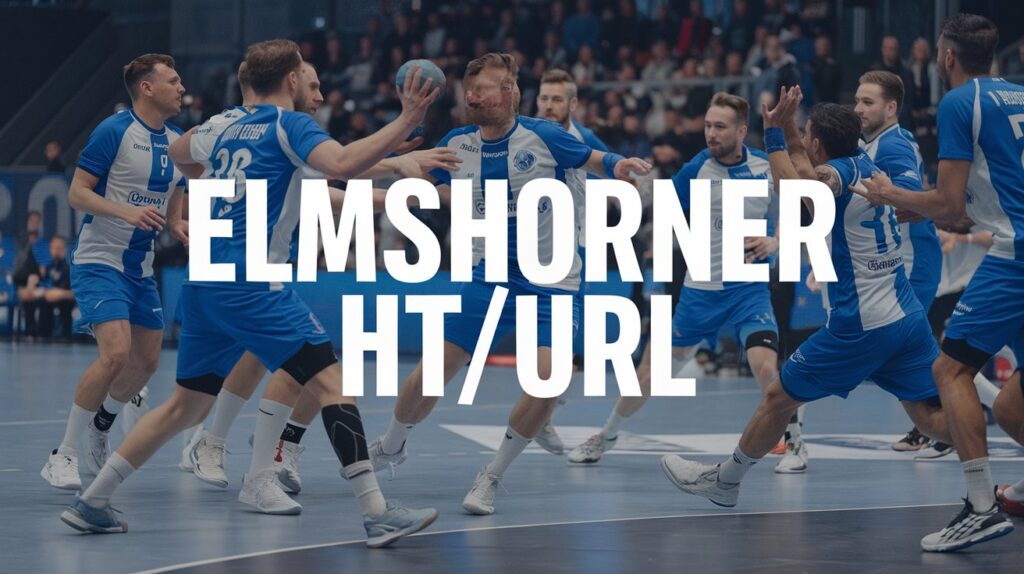In a world driven by digital connectivity and seamless online experiences, elmshorner ht/url has emerged as an essential concept for navigating complex web ecosystems. Whether you’re a developer, a user, or an enthusiast delving into the intricacies of web architecture, understanding elmshorner ht/url can help you optimize performance, enhance user satisfaction, and build more resilient digital environments. In this article, we’ll explore the origins, technical workings, practical applications, and broader implications of elmshorner ht/url, delving into its impact on security, structured web navigation, and the transformative power it holds in modern internet landscapes.
Table of Contents
What Is elmshorner ht/url?
At its core, elmshorner ht/url refers to a methodology that combines HTML templating (abbreviated as “ht”) with an advanced URL structuring technique. This approach enhances web applications by embedding intelligent link handling, dynamic content assembly, and route-driven page generation. Although the phrase elmshorner ht/url may sound esoteric, it captures a suite of practices that streamline content delivery, manage state transitions more elegantly, and improve the user’s perception of speed and interactivity.
By bringing together templating syntax (ht) and URL-based logic, elmshorner ht/url allows developers to treat URLs not just as static addresses but as active drivers of content generation. This means that every visit to a specific URL can trigger dynamic content assembly using HTML templates, ensuring consistency, maintainability, and flexibility in delivering web pages or partial content segments.

The Origins and Philosophy Behind elmshorner ht/url
The philosophy of elmshorner ht/url takes cues from both server-side rendering traditions and emerging client-side frameworks. Historically, web pages were constructed entirely on the server, using templating languages like JSP, Django, or EJS. These pages were fetched through straightforward URL requests: you visit /about, and the server renders the about page. While effective, this approach often led to slower load times and page refreshes.
Meanwhile, client-side single-page applications (SPAs) introduced route‑based rendering managed by JavaScript frameworks such as React, Angular, and Vue. URLs became abstractions rather than direct page requests—they merely mapped to client‑side components. elmshorner ht/url represents a convergence of these approaches: URLs still control content delivery but leverage powerful templating and partial rendering, reducing full‑page reloads and improving speed.
In the philosophy of elmshorner ht, a visitor’s URL is a declarative instruction—”display this section with these parameters”—and the system responds by assembling the HTML template accordingly. This philosophy decouples presentation (HTML structure) from logic (routing and URL interpretation), enhancing modularity and maintainability.
Advantages of elmshorner ht/url Architecture
Adopting elmshorner ht/url yields several benefits that can significantly improve both developer workflow and user satisfaction:
1. Faster Time to First Byte (TTFB)
By rendering on the server based on URL, elmshorner ht reduces the need for client-side hydration and large JavaScript payloads. Users experience faster page loads and enhanced performance.
2. Improved SEO and Accessibility
Search engines can crawl fully rendered HTML pages from the server. The URL mappings in elmshorner ht ensure that each page is statically addressable and meaningful, improving SEO and shareability.
3. Ease of State Management
With URLs representing the current application state (filters, pagination, item details), users can bookmark, share, and use browser navigation without losing context. elmshorner ht/url designs help maintain clean, declarative routing.
4. Modular Template Structure
Templates can be broken into partials—headers, footers, sidebars—making reuse and maintenance easier. When combined with elmshorner ht logic, it becomes easier to swap layouts or update shared components across routes.
5. Reduced JavaScript Overhead
Because much of the rendering can occur on the server and delivered via static HTML plus minimal client-side bootstrapping, the reliance on heavy frontend frameworks decreases. This leads to lighter asset bundles and quicker page loads.
Potential Challenges and Solutions
Despite its strengths, elmshorner ht can present challenges developers must address effectively.
Complexity in Route Handling
Large sites may require dozens or hundreds of route definitions. Organize route config files logically (e.g., group by feature) and use wildcard or regex patterns where appropriate. Documentation of your route structure is key.
Increased Server Load
Server-side rendering per page means increased CPU/database usage. Mitigate this via:
- Caching rendered HTML
- Offloading heavy operations to asynchronous background jobs
- Employing CDNs
Fragmentation and Maintenance Overhead
With partial templates and full-page templating, duplication may arise. Avoid this by centralizing shared partials and using DRY (Don’t Repeat Yourself) principles. Regular code reviews ensure consistency.

Future Trends: What’s Next for elmshorner ht/url‑Style Apps
The tech ecosystem continues evolving, and elmshorner ht/url‑inspired architectures are well-poised to benefit:
Edge Rendering and Jamstack Hybrid
Edge servers (like Netlify Edge, Cloudflare Workers) support rendering close to the user. elmshorner ht/url concepts align well with this, rapidly generating HTML at the edge, improving speed and reliability.
Smart Prefetching Based on URL Patterns
Advanced systems can predict the next probable routes—say, if a user is viewing a product, the site prefetches /products/ or related pages—reducing latency and making the site feel snappier.
API-Driven Content Management
With headless CMS systems, elmshorner ht/url can pull markdown or JSON content, render templates, and deliver stable URLs—all without full reliance on monolithic CMS software.
URL‑First Microservices
In microservice architectures, having a URL-first strategy means small renderer services handle specific routes (e.g., /blog, /shop), improving team autonomy and scalability. elmshorner ht is an ideal fit here.
Summary: The Transformative Power of elmshorner ht/url
The phrase elmshorner ht/url might appear niche, but it symbolizes a powerful architectural approach—one that blends server-side templating with dynamic, URL-driven rendering. It offers a middle path between old-school static page generation and heavy client-side SPAs. The result:
- Faster loading times
- SEO‑friendly content
- Clear URL semantics
- Modular and maintainable codebases
- Enhanced user experience styled around partial updates
By embracing elmshorner ht, teams can build resilient websites that stay responsive, secure, and maintainable. Whether you’re running an e-commerce storefront, a content platform, or an internal dashboard, adopting this URL‑centric templating model ensures that every page is an intentional, fully formed experience—not just an empty shell filled by JavaScript.
Getting Started with elmshorner ht/url
If you’re ready to give elmshorner ht/url a try, here’s a high-level roadmap:
- Choose a stack: Node.js with Express or Deno, Go with Gin, Python with Flask, etc.
- Select a templating engine: EJS, Handlebars, Jinja2, Mustache.
- Define clear routes: Map static and parameterized URLs.
- Create page templates: Build
.ht‑style files for each route. - Implement data loaders: Connect your route logic to fetch appropriate data.
- Support client-side fragments: Plan
?fragment=endpoints for dynamic updates. - Add SEO metadata: Ensure unique titles, meta tags, and social sharing info.
- Test and document: Validate URL structures, template correctness, and performance.
- Deploy with caching: Use CDNs and cache strategies for optimal performance.
- Iterate: Expand templates, optimize load times, and refine routing over time.
Final Thoughts
While elmshorner ht/url may not yet be labeled as the next big buzzword in web development, its principles are increasingly relevant. The convergence of clean URLs, templating rigor, and selective client‑side interactivity offers a balanced, future‑proof approach for modern web experiences. As technologies like edge computing and progressive rendering gain traction, adopting elmshorner ht/url concepts places your projects ahead of the curve—delivering speed, clarity, and scalability to users and developers alike.
Give it a try. Whether you’re managing content, products, or internal systems, the next generation of user‑friendly web delivery may just be powered by the humble but mighty elmshorner ht/url.



